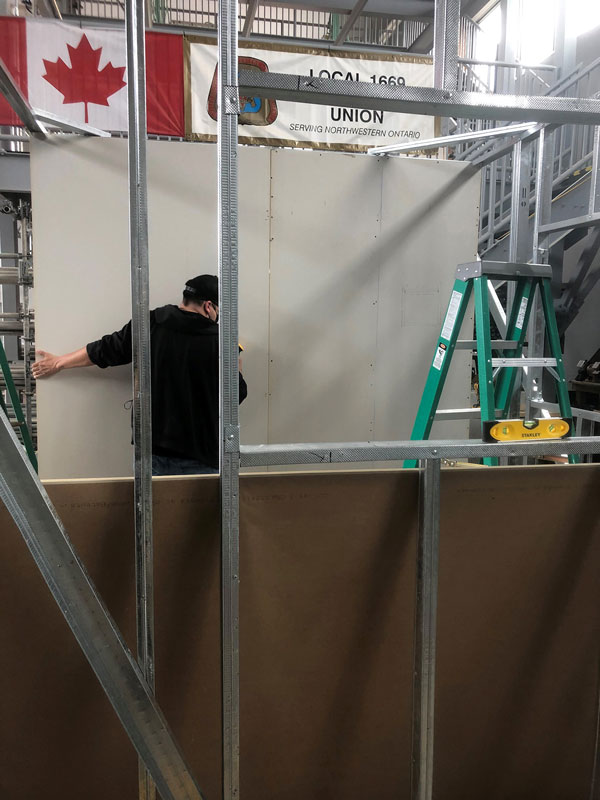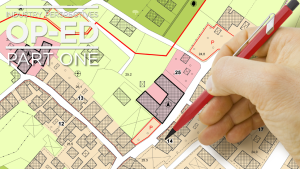A pre-apprenticeship program in Thunder Bay, Ont. is aiming to remove barriers for First Nations citizens interested in entering the drywall, acoustics and lathing applicator trade.
Upon completion of the 16-week, hands-on training program, run by the Anishinabek Employment and Training Services (AETS), in partnership with the Ministry of Labour, Training and Skills Development and the Carpenters’ Local 1669 Training Centre, participants will have the opportunity to become a registered apprentice, gain employment in the sector and/or enter related post-secondary training.
“The benefits are the wrap around, paid for supports for the clients, to ease the transition from training to employment,” said John DeGiacomo, executive director of the AETS. “We’ve had good success with the trades unions, the Carpenters’ Union and LIUNA being two of the unions we work with. We receive dollars through either the federal or the provincial government, we then subcontract the specific training program to deliver.”
AETS, established in 1997, pays particular attention to the culture and the barriers to employment faced by First Nations, including but not limited to systemic racism in the workplace, DeGiacomo explained.
“AETS provides respect of the culture through the programming which includes understanding the communities and background with access to Elders and related supports as requested,” he said.

The organization is part of the Indigenous Skills Employment Training agreement holders, one of over 100 in Canada and one of 22 in Ontario. The goal is to assist First Nation citizens to stay in or re-enter the labour force by delivering employment and training services and programs for nine First Nations communities in the North Superior Region.
“AETS works with First Nations citizens that are out of school or out of work and looking to transition into work,” DeGiacomo noted. “We’re an employment centre, but specifically focused on those Indigenous citizens that are from the nine communities in the North Superior Region. It’s a huge area that we cover.
“We also work with employers that need certain employees, so there is skills training that we get involved with the jobseekers to help them gain employment.”
The pre-apprenticeship program for drywall/acoustics/lathing applicator is 22 to 28 weeks long in total. Due to the COVID-19 pandemic, AETS had to pivot to provide two smaller cohorts, a spring session and a summer session, of nine participants per class.
Following the application, interview acceptance and orientation process, life skills and math upgrading for the particular trade are provided before getting into trades training.
“It’s a holistic initiative where we allow those citizens that have barriers to employment to get into training programs,” said DeGiacomo. “It may be transportation, it may be child care needs, there may be training allowance needs, accommodation needs, meal needs, all of those things are taken into consideration so the citizens are prepared to succeed in the program.”
Because of the partnership with the Carpenters’ Union, participants will receive achievement for pre-apprentice drywall/acoustics/lathing applicator level 1 and completion for 32 hours of introductory training for welding and metal cutting.
They will also complete health and safety awareness training for asbestos awareness; ladder use; fire extinguisher; lifting ergonomics; power elevated boom and aerial lift (scissor lift); propane safety for propane powered equipment; and the basics of hoisting and rigging in construction.
Once the certifications are complete, AETS works with employers to do a subsidized work placement with the aim of employment afterwards.
“When we are delivering the different components of the training…they can work towards their high school diploma as well but then there is the specific core training. In this case we are doing drywall training and after that sometimes there is a secondary training like welding. Not only will they get drywall but they will get some welding training,” DeGiacomo said. “They will become certified then to work with an employer. We offer the employer a wage subsidy to help with the transition to full time employment.”
AETS also offers other training programs such as personal support worker and a pre-health program coming up as well as work in the mining and forestry sectors.
“We have been successful with the construction sector and the unions, helping train those individuals that are looking for an in-demand occupation,” said DeGiacomo.
“Anywhere between 75 per cent and 100 per cent has been our success rate of those individuals completing the training.”
The Daily Commercial News will have more on this story with part two featuring students and the instructor sharing their experiences.
Follow the author on Twitter @DCN_Angela.











Recent Comments